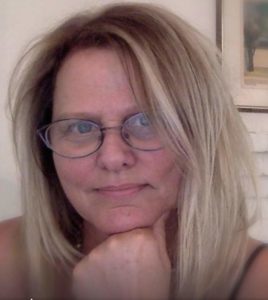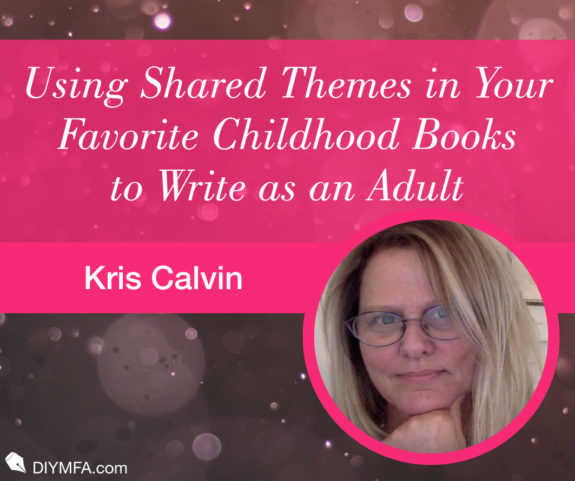It is often said that authors who write creatively benefit from writing what we know—building characters and developing plots that draw on our own experiences.
For example, a lifelong sailor who grew up around water has a better chance of crafting a compelling high-seas adventure tale than they would a story about a landlocked farmer.
No question, that makes intuitive sense.
But I think we also write powerfully when we seek inspiration in what we aspire to—in a reality different from our own that we want to inhabit. Even if it’s only “make-believe.”
And for me, I found that returning to themes from books I loved as a child provided a window into that source of inspiration more quickly and clearly than I might have achieved any other way.
A little background might help…
I didn’t feel safe in my own home as a child. Sadly, I’m not unique in that experience. But fortunately, I found sanctuary in my local public library, where I was able to escape into the fictional adventures of children who, while often in jeopardy, always ended up safe. Whether the perils they faced were pirates or dragons or a scary parent or stepparent, through their own ingenuity and bravery or with the help of a caring adult, they emerged, happily ever after.
Paddington the Bear, having traveled all the way from Peru, at first lost and alone, finds a loving family and a home. Peter Pan defeats Captain Hook, and Wendy and the Lost Boy don’t have to walk the plank. Madelaine not only survives her scary appendectomy, in the end the other 11 girls in “the house all covered with vines” want the operation too. Stories like these gave me hope.
While I now read novels intended for adults, I remain drawn to thrilling adventures where excitement and danger keep me on the edge of my seat, but where children are unharmed in the end. Yet over the years, the subgenre of crime fiction that doesn’t feature killers who prey on children or dark subplots where children suffer has seemed harder and harder to find.
As I contemplated the world I wished I could read about—in particular, one very different from the one I’d grown up in—I had an idea for a thriller of my own. I’d never thought of being a writer, but I just couldn’t shake free from the story in my head.
And I realized that it was in my power to create something like the stories that had given me such joy and solace as a child—an adventure story where children are in jeopardy, but emerge safe in the end.
I was aware that no-one but me might ever read it, but nonetheless, I felt compelled to tell that tale.
It was a great surprise to me when that story became a book, and that book won a Silver Falchion award for Best First Novel and Best Female PI/Sleuth, such that I joined past winners like Sue Grafton, Dean Koontz, John Sanford, Catriona McPherson and Ann Perry!
Since then, I’ve had two more thrillers published, and in all three, while there are children in jeopardy, every child a reader comes to know will be safe.
That overarching element that I discovered in childhood stories that gave me a lifelong love of reading has also now fueled my passion for writing as an adult!
The roots of your love for reading and writing might be very different. They could even be the polar opposite—you could find release in stories of darkness and horror that entertain without trauma for you. But whatever the content, one way to access hidden inspiration that can bring your stories to life, with intensity and a voice that is all your own, is to look back at what you most liked to read as a kid.
Exercise/Writing Prompt:
1. Identify three books you loved when you were a child.
The farther back you can go, the younger you were, the better. But if something you read as a teenager has stayed with you the most, include that too.
2. Look for common elements among those stories.
Was there a strong and colorful protagonist that you identified with? Were there intriguing puzzles to solve? Did you prefer first person or third person narratives?
You are seeking the essence of what made those books so special to you. Note: You might have to revisit the books online to refresh your memory as to the particulars.
If the books do not share elements, record what made each one a favorite for you.
3. Draft a pitch.
Draft a pitch of no more than a paragraph that would be given to an agent or editor to sell them on your idea for a book that contains one or more of those elements that spoke to you as a child.
4. Start writing.
If one of those pitches stands out to you, start writing, whether with an outline, or a first scene. You never know, it just might be the beginning of your award-winning novel!
I hope you find this exercise helpful. Please do not hesitate to contact me if you have questions.
And if you happen to know of any thrillers with no harm to children, I’d love your recommendations!
 Kris Calvin’s latest novel, UNDER A BROKEN SKY (July 12, 2021; Crooked Lane Books) is the second in her Emma & Alibi mystery-thriller series. Kris served for more than 20 years as the CEO of the American Academy of Pediatrics in California, and was honored for her leadership in advocacy for children by the California Legislature.
Kris Calvin’s latest novel, UNDER A BROKEN SKY (July 12, 2021; Crooked Lane Books) is the second in her Emma & Alibi mystery-thriller series. Kris served for more than 20 years as the CEO of the American Academy of Pediatrics in California, and was honored for her leadership in advocacy for children by the California Legislature.
You can find her on her website or follow her on Twitter.







